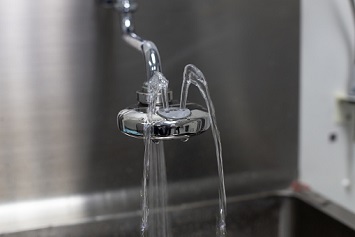While the Occupational Safety and Health Administration (OSHA) has few specific requirements for eyewash stations, there are good best practices available under American National Standards Institute (ANSI) voluntary standards. Experts at Safety.BLR.com® were recently asked a question about proper installation of eyewash stations—read on to see what they had to say and how it can be applied at your facility.

Sinhyu / iStock / Getty Images Plus / Getty Images
Q: I have a client that would like to install sink-mounted eyewash station in their commercial kitchen. What are the requirements for these type of units to meet OSHA standards?
A: OSHA itself has limited requirements for eyewash stations. Under its general industry standard for first aid, OSHA requires employers to provide suitable facilities for immediate emergency use within the work area for quick flushing of the eyes where a person’s eyes may be exposed to corrosive materials.
However, OSHA refers employers to the American National Standards Institute (ANSI) Z358.1 Standard for Emergency Eyewash and Shower Equipment for guidance about the installation, operation, and maintenance of eyewash stations and has enforced it during inspections.
Since ANSI standards are copyright protected and BLR does not have permission to reproduce them, I cannot discuss the requirements of Z358.1 in detail. However, some of the requirements include that eyewash stations be located no more than 10 seconds (or about 55 feet) from hazardous work areas. The station should be located on the same level as the hazard, have a clear path for travel, be installed in a well-lit area, and be marked with a visible safety sign.
Sink-mounted eyewash stations, also called plumbed eyewash stations, like the one your client would like to install, are permanently connected to a continual source of potable water. For these types of stations, the standard recommends a water flow of 0.4 gallons per minute (gpm) at 30 psi, and the water flow must be sustained for at least 15 minutes. An eyewash gauge should be used to verify and test the flow pattern.
Other requirements include that the water temperature must be between 60 and 100 degrees Fahrenheit; the nozzles should located be at least 6 inches from any obstruction; and the station should activate in one second or less.
For more information about the ANSI standard’s extensive installation, operation, maintenance, and training requirements for eyewash stations, see Z358.1, available for purchase from https://webstore.ansi.org.
Note: This question was answered by experts at Safety.BLR.com. Not a Safety.BLR.com subscriber? Visit the site today and take advantage of all that it has to offer! Or if you would like to take a free trial, click here.
